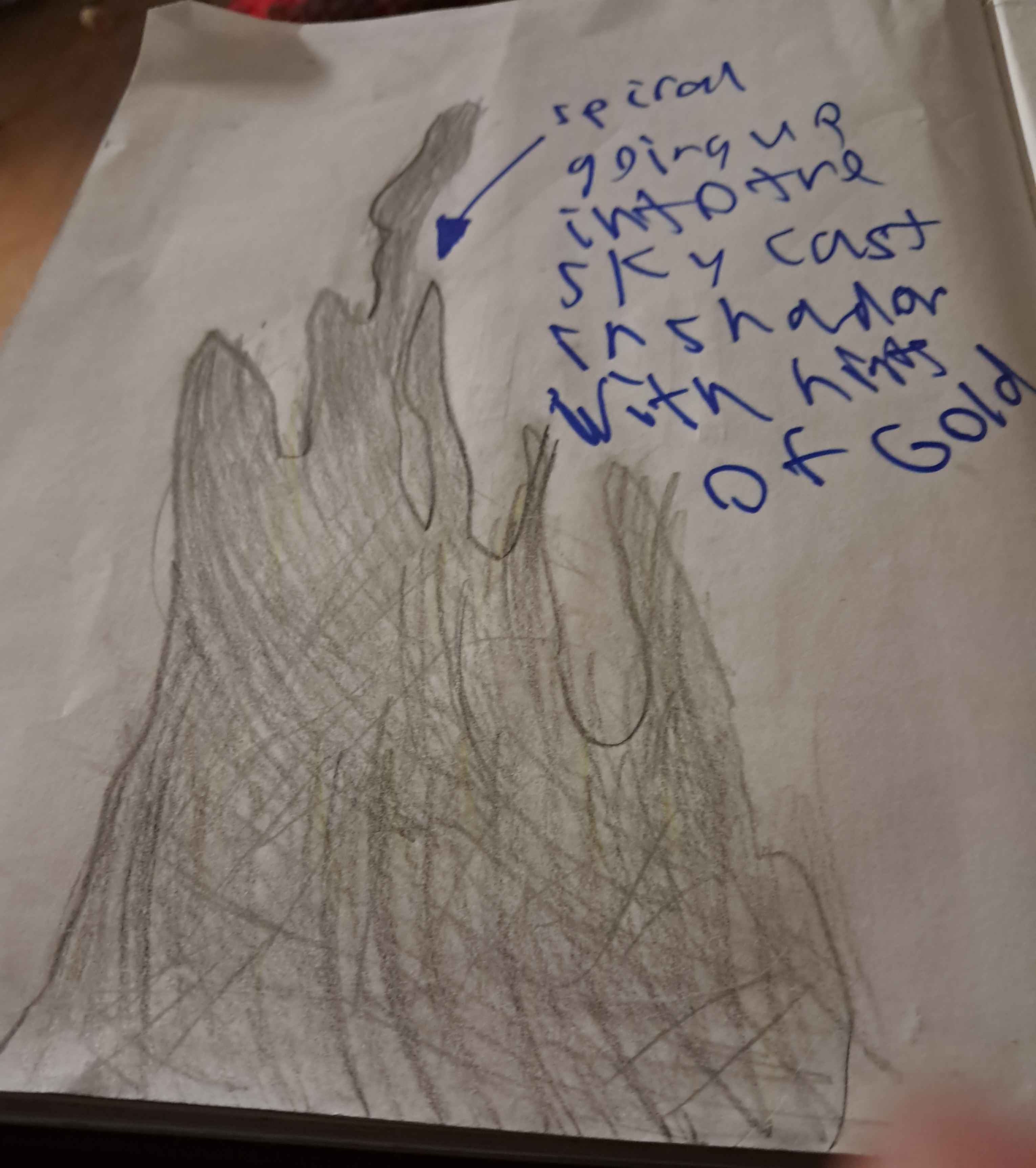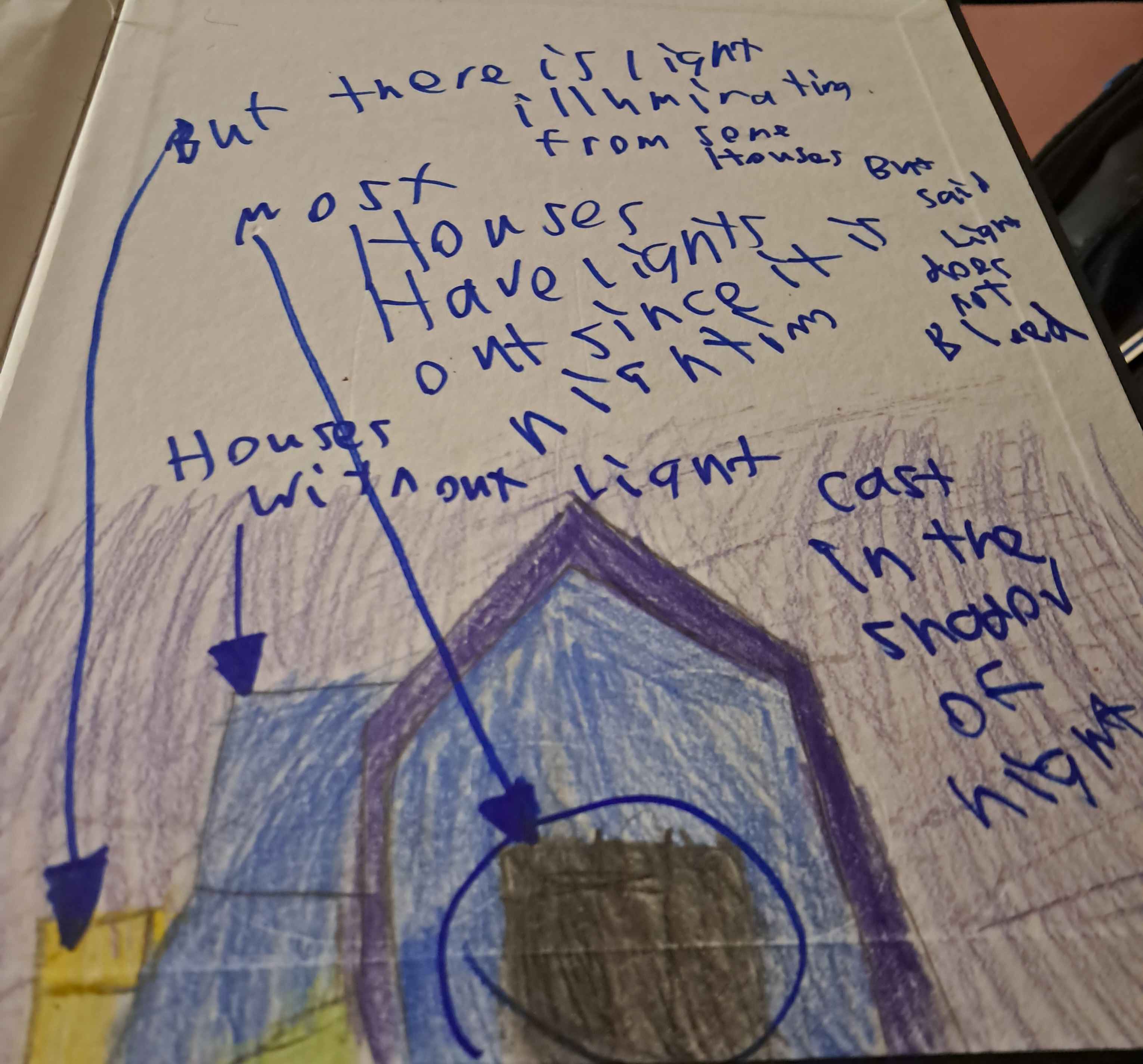Lighting Journal Entry 7
Prompt
Select a painting from any period that appeals to your lighting sensibilities. Please write a short paragraph describing the artist, the style/period of the painting, and why you chose it. Create sketches and written notations of the light’s direction, color, and textures in the painting. How might this look/feeling be replicated on stage? Upload photos (including the inspiration painting), drawings, and notations to your portfolio.
Painting In Question

Why the Painting in Question Was Chose
The painting in question is the famous painting by Vincent Van Gogh The Starry Night. I choose this painting because as beings who like to look up at the night sty and howl at a full moon on occasion immagary of the night sky has always connected with us. Plus how this impressionist work by the artist captures the immense beauty of lighting at nightime made it a work we wanted to particuarly focus on for this lighting journal.
Background of the Painting in Question
This painting’s background reflects a mixture of the observations of the artist outside there window of the facility they were being kept out along with blending in the state of the painters own mental health evident especially seen in the spiral the haunts the otherwise peaceful night in the village. This painting was painted in the year 1889 and is stylistically a post impressionist style painting. The post impressionist style of artistic movement was characteristized by a rebellion against the Impressionist period’s focus on a naturalistic depection of light and color. With the post impressionism period forcusing more on abstract and symbolism. Which is clearly captured in the paintings blending of nautralism and realistic uses of light with abstract symbolism embodying the painters mental health during the given time period. -Wikipedia
Source cited:
“Post-Impressionism.” Wikipedia, Wikimedia Foundation, 12 Nov. 2025, en.wikipedia.org/wiki/Post-Impressionism.
“The Starry Night.” Wikipedia, Wikimedia Foundation, 12 Nov. 2025, en.wikipedia.org/wiki/The_Starry_Night.
Light Analysis the Starts

Starting with the stars the first noticeable thing about them is that not all the stars and the titular moon have the same intensity. The stars varrying in intensity in the light they are giving off has actual stars do and within the direct pools of lights surronding them. Including the pool of lights having variations in size. With the most intense out of everything being the cerscent moon in the night sky above.
Moreover, streaks of the gold light from the moon and stars beleed into the nighsky and the hilltop below. As light often bleeds into the objects around it recoloring it.
The stars and the crescent moon shape could be achived using gobos. With varying areas of light using alterations in the intensity property. For the pools of light surronding the stars you could create varations by adjusting the barrel of the fixtures. To achive varations that would look similar to that of the look of the painting.
For the rest of the stage blend in a small amount of yellow spots into an otherwise cool nightsky wash.
Light Analysis Spiral of Darkness

Next we have the titular spiral of darkness that is present with the painting. This is just a spiral that has been heavily cast within a tint of shadow.
To replicate something on stage in a similar fashion would be to cast a heavy shadow onto the object using very intense front lighting. With the lighting in queston also providing the object and the rest of stage limited visibility. Creating the stillness of the sory of experience of seeing shadows in your bedroom of night of objects that were once friendly during the light of day.
Light Anyalysis Village below

The main thing to note about the village below story telling wise is the contrast between the houses. Some of the houses have light illuminating from them while others are pitch black. Showing a dissonence in how while most of the village below is asleep some select few remain awake.
This could be achived by combining light with the architecture of set design while also using shutters or barndoors to shape the light as the light from these village houses seems hesistant in bleeding with any of the surronding scenary unlike the light from the sky above.